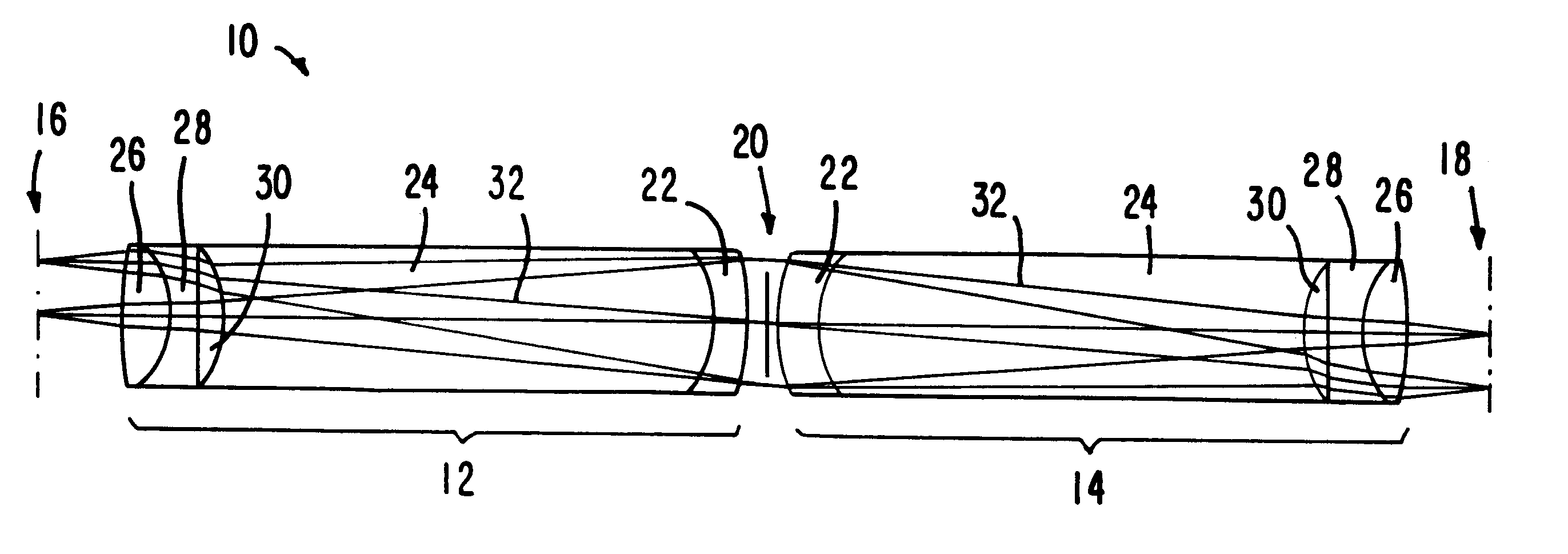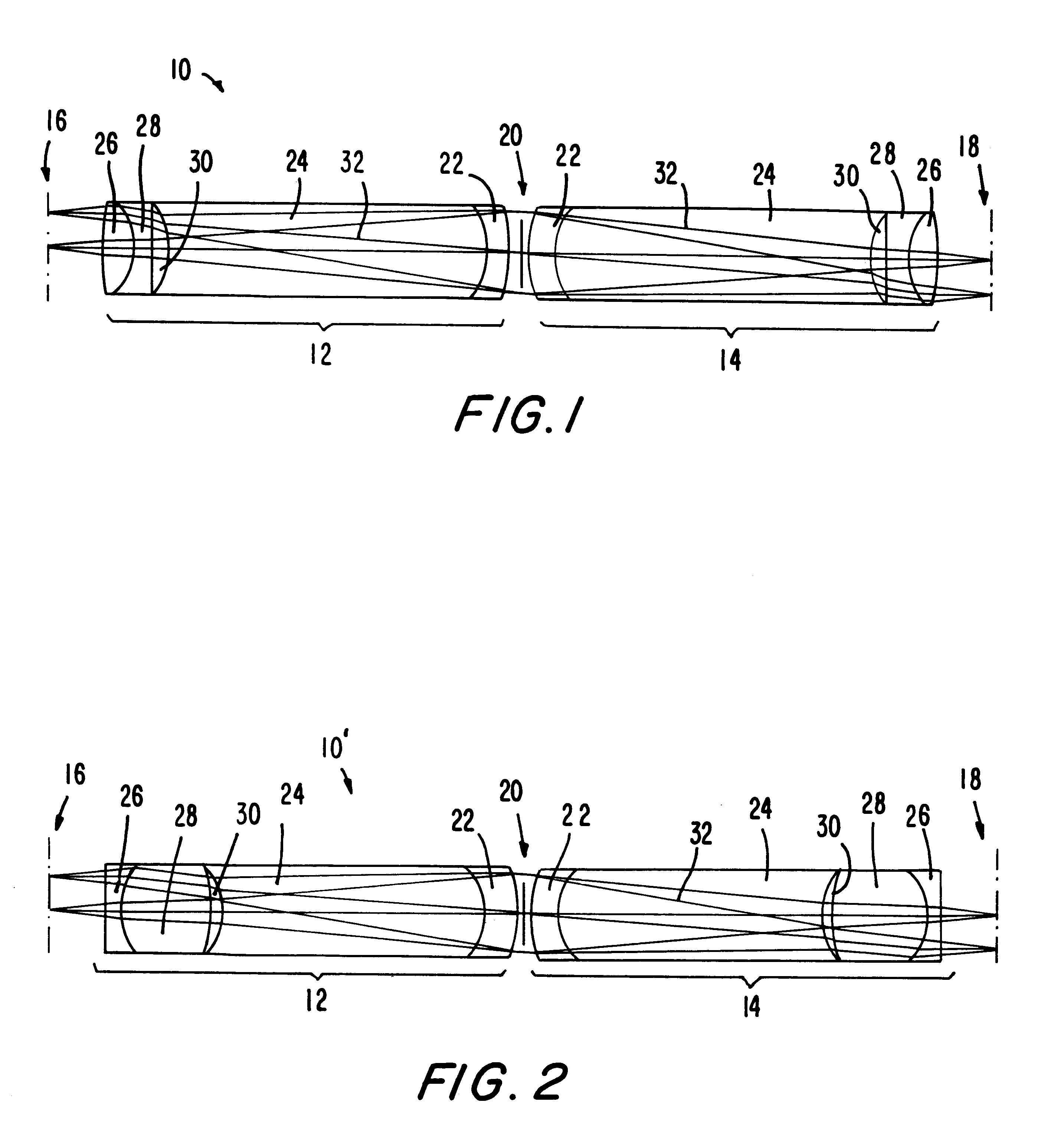Symmetric anastigmatic endoscope relay system
a relay system and endoscope technology, applied in the field of optical lens systems, can solve the problems of concomitant loss of performance in one or more of the remaining factors, affecting image brightness, and not correcting field curvature and astigmatism
- Summary
- Abstract
- Description
- Claims
- Application Information
AI Technical Summary
Benefits of technology
Problems solved by technology
Method used
Image
Examples
Embodiment Construction
With initial reference to FIG. 1, a symmetric relay system 10 for endoscopes constructed in accordance with the present invention includes a pair of elongated, meniscus-shaped (i.e. concavo-convex) rod-type lenses 24 that are formed from crown glass. Each rod lens 24 forms a part of a respective first and a second imaging part 12, 14 of the system 10 that are longitudinally aligned and through and along which an image is operatively directed for viewing of the image through an eyepiece or on an electronically-generated display. Since the relay system 10 is symmetric, the relay system can be oriented so that an image is operatively transferred in either direction therethrough; for convenience and ease of discussion, it is assumed herein that a suitable objective lens system--which in an endoscope images an internal body part or object or location and generates a first intermediate image 16 for presentment to the system 10 is located in the drawings at or beyond the lefthand edge of e...
PUM
 Login to View More
Login to View More Abstract
Description
Claims
Application Information
 Login to View More
Login to View More - R&D
- Intellectual Property
- Life Sciences
- Materials
- Tech Scout
- Unparalleled Data Quality
- Higher Quality Content
- 60% Fewer Hallucinations
Browse by: Latest US Patents, China's latest patents, Technical Efficacy Thesaurus, Application Domain, Technology Topic, Popular Technical Reports.
© 2025 PatSnap. All rights reserved.Legal|Privacy policy|Modern Slavery Act Transparency Statement|Sitemap|About US| Contact US: help@patsnap.com


